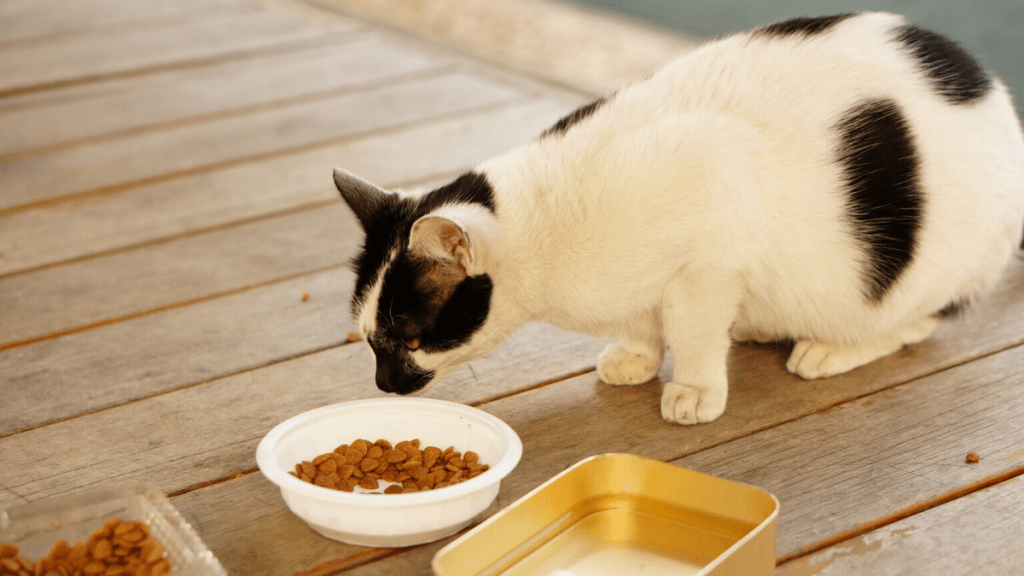Yep, feline acne is a real thing. Cats can develop a skin condition that makes the skin around the chin turn crusty and red. Some cats also develop clogged hair follicles that fill with pus. But no need to start washing your cat’s face daily (we wish you the best of luck with that) — feline acne can flare up for several reasons, and oily skin is only one of them. Dog owners: we totally understand if you’re not interested in reading about feline skin conditions. Don’t close this article quite yet; instead, scroll to the end for some veterinary advice that also concerns your canine companions.
How do cats get acne?
We don’t know, but we have a few theories. If you read our article last week about why your dog eats grass, you’re probably getting frustrated with all the “we’re the vets but we don’t know for sure” nonsense. Just bear with us: we may not know exactly why this condition occurs, but we do have some pretty decent tips for preventing it.
So on to the theories! Veterinary studies have discovered that multiple cats in the same home can develop feline acne at the same time. This tells us that there’s probably an environmental trigger that contributes to the development of this condition, rather than a genetic/hereditary reason alone. The most obvious theory is that overproduction of oil by the skin’s sebaceous glands causes the skin follicles to clog and become infected.
Research has shown that the development of feline acne may be associated with various health conditions, including food and environmental allergies, autoimmune disorders, and skin sensitivity to certain materials like plastics. What we don’t know is if these conditions cause feline acne, or just make it more likely that a cat could develop acne.
So on to the theories! Veterinary studies have discovered that multiple cats in the same home can develop feline acne at the same time. This tells us that there’s probably an environmental trigger that contributes to the development of this condition, rather than a genetic/hereditary reason alone. The most obvious theory is that overproduction of oil by the skin’s sebaceous glands causes the skin follicles to clog and become infected.
Research has shown that the development of feline acne may be associated with various health conditions, including food and environmental allergies, autoimmune disorders, and skin sensitivity to certain materials like plastics. What we don’t know is if these conditions cause feline acne, or just make it more likely that a cat could develop acne.
How do we treat feline acne?
Your veterinarian will first clean the area. Depending on how bad the skin is, they may choose to shave the area for easier cleaning. If the skin has been damaged, it may need to be treated with an antiseptic solution. Feline acne can advance into skin abscesses if left untreated; if any abscesses are present, they may need to be lanced and drained. Good news though: it’s very rare that feline acne progresses into an abscess!
A mild case of feline acne will usually resolve when treated with a topical antibiotic medication. If the skin is inflamed and causing pain, steroids may be recommended. Using an antibacterial shampoo on the chin area daily will also help clear up any acne and can be used as needed to control breakouts.
A mild case of feline acne will usually resolve when treated with a topical antibiotic medication. If the skin is inflamed and causing pain, steroids may be recommended. Using an antibacterial shampoo on the chin area daily will also help clear up any acne and can be used as needed to control breakouts.
Can you prevent feline acne?
The best thing to do to prevent this condition from recurring is to promote good hygiene for our feline friends. Many cats are perfectly capable of grooming themselves and do so quite diligently. Arthritic or overweight cats may have a harder time with this, and keeping their coats clean and healthy is important for their overall health.
If feline acne is caused by hypersensitivity to a material, try to identify that material and remove it from your cat’s environment. One type of material that’s been shown to be associated with feline acne is plastic food bowls. (This is where our dog owners should jump in.) Plastic and ceramic food and water bowls are porous and softer than metal bowls. Any dents, cracks or scratches in these bowls can harbor bacteria. This can not only cause feline acne but also can cause chin acne in some breeds of dogs, bulldogs in particular. If you have plastic or ceramic bowls, make sure they are washed several times per week, or switch to metal bowls (metal bowls still need to be washed weekly!). If your pet is particularly messy at mealtime, it may also help to wipe their face after each meal.
If feline acne is caused by hypersensitivity to a material, try to identify that material and remove it from your cat’s environment. One type of material that’s been shown to be associated with feline acne is plastic food bowls. (This is where our dog owners should jump in.) Plastic and ceramic food and water bowls are porous and softer than metal bowls. Any dents, cracks or scratches in these bowls can harbor bacteria. This can not only cause feline acne but also can cause chin acne in some breeds of dogs, bulldogs in particular. If you have plastic or ceramic bowls, make sure they are washed several times per week, or switch to metal bowls (metal bowls still need to be washed weekly!). If your pet is particularly messy at mealtime, it may also help to wipe their face after each meal.






